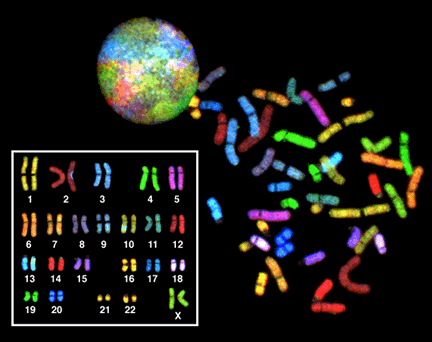Chromosomal Features
![By NIH, User:Phrood, En rouge [Public domain or Public domain], via Wikimedia Commons](https://bccbio.commons.gc.cuny.edu/wp-content/blogs.dir/4088/files/2015/06/chromosomes-953x1024.png)
Large-scale genomic rearrangements result in genetic abnormalities. Biologists utilize a technique called a chromosome spread followed by a karyotype. To make a chromosome spread, one blocks the progression of mitosis at metaphase where chromosomes are condensed into the structures we are familiar. A karyotype analysis is an arrangement of the chromosome spread into the homologous pairs of chromosomes.

Events associated with the improper separation of chromosomes during metaphase results in an alteration of chromosome number in the subsequent generation of cells. Using the Pop-beads, we can understand better how the timing of these events will lead to differences in the karyotype.

